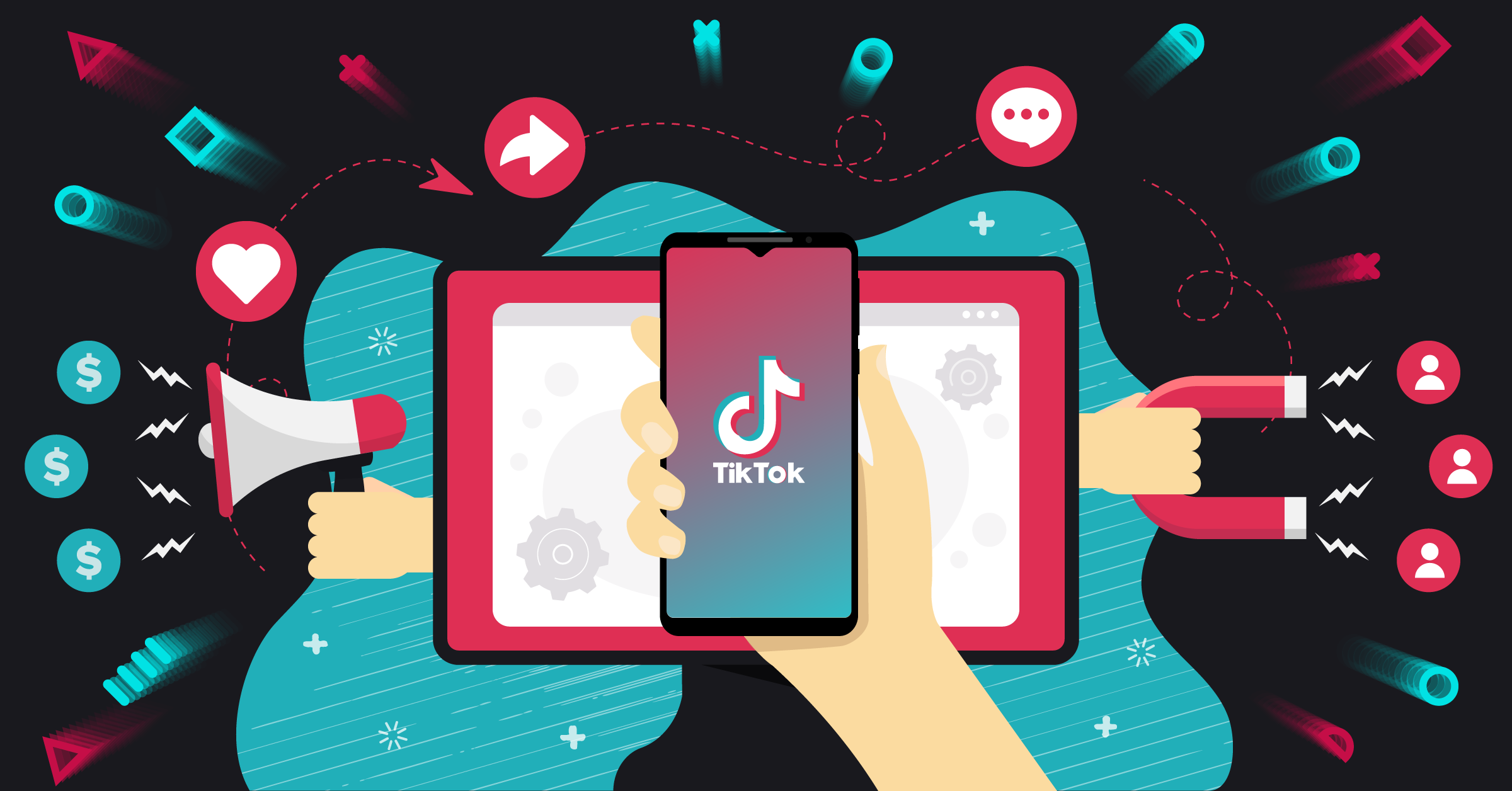
As the world becomes more digitally driven, businesses are looking towards social media advertising to promote their products and services and target the right audiences. Facebook and TikTok are two of the leading platforms offering advertising opportunities, but each has unique features and benefits that cater to different business needs.
Below we will pair the two social media giants head-to-head, TikTok vs. Facebook, discuss the key differences between Facebook and TikTok, whether or not TikTok ads are better than Facebook ads, and how LeadsBridge can revolutionize your approach to both through the power of automation.
Facebook ads vs. TikTok ads
Facebook ads
Facebook is one of the most popular social media platforms, with over 3 billion monthly active users. It offers a wide range of advertising options, including sponsored content, carousel ads, and video ads.
Furthermore, Facebook ads allow businesses to create and promote ads across Facebook’s vast network, including Facebook itself, Instagram, Messenger, and Audience Network.
Some key features of Facebook ads include:
- Extensive Targeting Options: Facebook provides advertisers with a wide range of targeting options, including demographics, interests, behaviors, and custom audiences. This level of precision enables businesses to reach their desired audience effectively.
- Robust Analytics Options: Facebook ads offer in-depth analytics and reporting tools to measure the performance of campaigns. Advertisers can access detailed metrics such as impressions, clicks, conversions, and engagement, allowing them to optimize their ad strategies.
- Diverse Ad Formats: With Facebook ads, businesses can choose from various ad formats, including image ads, video ads, carousel ads, and collection ads. This versatility enables advertisers to showcase their products or services in creative and engaging ways.
- Data-Driven Audience Insights: Facebook ads provide valuable insights into the demographics, interests, and behaviors of its users. This data can help businesses refine their targeting strategies and tailor their ads to specific audience segments.
- Ad Policy Guidelines: Facebook has comprehensive ad policies in place to ensure a safe and trustworthy advertising environment. Advertisers need to comply with these policies to maintain the quality and integrity of their ads.
- Wide Range of Industries: Facebook ads cater to a broad range of industries, making it suitable for businesses across various sectors, including e-commerce, B2B services, healthcare, and more.
TikTok ads
TikTok is the fastest-growing social media platform, with approximately 1.5 billion monthly active users. It is popular among younger audiences, and its ad format is primarily focused on video content. The platform provides unique features for advertising, such as In-Feed Ads, Brand Takeover, TopView, and Branded Hashtag Challenges.
TikTok ads are used as an emerging advertising platform that leverages the popularity of short-form video content. With its vibrant and youthful user base, TikTok offers unique opportunities for businesses to connect with a younger audience.
Let’s explore its main features:
- Engaging video ad formats: TikTok ads focus primarily on video ad formats, encouraging businesses to create captivating and entertaining content. Advertisers can experiment with full-screen videos, in-feed videos, branded hashtag challenges, and more, to capture users’ attention.
- Targeting options: While TikTok’s targeting options are not as extensive as Facebook’s, advertisers can still target their audience based on factors such as location, age, gender, interests, and devices. TikTok is continually expanding its targeting capabilities to provide advertisers with a more precise audience reach.
- Growing analytics capabilities: TikTok ads is enhancing its analytics offerings, providing advertisers with valuable insights into their ad performance. Advertisers can access metrics such as impressions, video views, engagement rates, and click-through rates to optimize their campaigns.
- Young and active user base: TikTok attracts a predominantly young user base, with a high engagement rate. This platform is particularly appealing for businesses targeting Generation Z and millennials.
- Evolving Ad Policies: As TikTok evolves as an advertising platform, it continues to refine its ad policies to ensure the quality and relevance of ads. Advertisers must adhere to these guidelines to maintain a positive user experience.
- Creative opportunities: TikTok encourages creativity and offers opportunities for brands to create viral and shareable content. Brands that can effectively tap into TikTok’s trends and challenges can gain significant exposure and brand awareness.
Key differences between Facebook ads and TikTok ads
A. Costs
When it comes to advertising costs, Facebook ads and TikTok ads differ in their pricing models and budget requirements. Facebook ads generally offer a more flexible and scalable pricing structure.
This allows advertisers to set their budgets based on daily or lifetime spend. It also provides options for cost-per-click (CPC), cost-per-mille (CPM), or cost-per-action (CPA) bidding. On the other hand, TikTok ads typically require a higher budget commitment, especially for businesses aiming to run campaigns on TikTok’s Discover page or with influencer partnerships.
Generally, Facebook ads have a lower CPM, but a similar CPC when compared to TikTok ads.
Here’s how much it costs to advertise on TikTok.
And more importantly, you can discover how to increase ROAS on Facebook Ads here.
B. Targeting options
Facebook’s targeting options are more diverse and provide more specific targeting than TikTok ads. Facebook’s algorithm leverages vast user data and advanced targeting capabilities to enable advertisers to reach highly specific audiences based on demographics, interests, behaviors, and even custom audiences created from existing customer data.
TikTok ads, while improving its targeting options, currently offers more limited choices. Advertisers can target users based on location, age, gender, and interests, but the granularity is not as refined as that of Facebook ads.
C. Analytics options
Facebook ads provide comprehensive analytics tools, enabling advertisers to measure the performance of their campaigns effectively. Advertisers can access detailed insights, track conversions, and utilize pixel data for advanced optimization.
Although making strides in improving its analytics offerings, TikTok ads currently offer more basic metrics, such as impressions, video views, and engagement rates. However, it is actively working on expanding its analytics capabilities to provide more in-depth insights to advertisers.
D. Audience data
Facebook has a wealth of user data, allowing advertisers to gain insights into their target audience’s demographics, interests, behaviors, and online activities. This data empowers businesses to create highly personalized and targeted ads.
TikTok ads provide limited audience data, making it challenging for advertisers to gather detailed information about their audience segments. However, TikTok’s user base is known for being young and highly engaged, which can be advantageous for brands targeting that demographic.
E. Types of ads
Facebook Ads provide a wide range of options, including image ads, video ads, carousel ads, collection ads, and more.
TikTok ads, on the other hand, primarily focuses on video ad formats, leveraging the platform’s core strength of short-form videos. Advertisers can experiment with full-screen videos, in-feed videos, brand takeovers, TopView, and branded hashtag challenges.
F. Policies
Both Facebook and TikTok have strict policies when it comes to advertising and advertisers must familiarize themselves with these policies to ensure compliance and avoid ad disapprovals or account suspensions.
Facebook’s ad policies cover aspects such as prohibited content, targeting restrictions, and community standards. TikTok has its own set of guidelines, including rules on misleading information, authenticity, and user experience.
G. Industries
Facebook ads cater to a wide range of industries, making it suitable for businesses across various sectors. It has established itself as a go-to platform for many businesses. Advertising car dealerships on Facebook is another popular approach. Learn more about it here.
TikTok ads are particularly appealing to brands targeting younger audiences and industries such as fashion, beauty, gaming, and lifestyle. It offers unique opportunities to engage with Generation Z and millennials, leveraging the platform’s vibrant and creative nature.
Whether you run advertising campaigns on TikTok for your car dealership, or use TikTok as a way to reach your real estate audiences, audience targeting remains an important aspect of your business.
Learn more about TikTok advertising for small businesses here.
H. Facebook vs. TikTok users
When it comes to the users on TikTok vs. Facebook, the audiences are quite different. TikTok is mostly popular with younger people. About 68.5% of its users are under 34, with most of them aged between 18 and 24.
This makes it a great platform for reaching Gen Z and younger millennials. On the other hand, Facebook has a wider age range. About 54% of its users are over 34, making it better for targeting older millennials, Gen X, and even older generations.
Taking a look at the numbers, Facebook still has the upper hand with nearly 3 billion monthly active users, compared to TikTok’s 1.5 billion. However, TikTok’s rapid growth and popularity among younger audiences make it an important platform for brands wanting to engage the next generation of consumers.
TikTok vs Facebook data collection
While both TikTok and Facebook collect extensive data on their users, the scope, scale, and use of this data are different. This is because each platform is different in business models, target audiences, and the range of services it offers.
Privacy concerns continue to be a recurrent topic to deal with for both platforms. That’s why also users and businesses need to be aware of the data they share online, the data they collect, and how their data, as well as others, can be used.
The table below shows an overview of the distinctions between the two platforms, TikTok vs. Facebook, data collection.

Pros and cons
Facebook ads pros
- Extensive targeting options for precise audience reach
- Robust analytics and reporting tools for performance measurement
- Diverse ad formats to showcase products or services creatively
- Rich user data for personalized and targeted advertising
- Cater to a vast array of industries and verticals
Facebook ads cons
- Increasing competition could lead to higher advertising costs
- Ad policies can be stringent, requiring compliance and constant monitoring
- Increased ad fatigue among users due to the frequency of ads
TikTok ads pros
- Engaging and immersive video ad formats to capture user attention
- Growing user base of young and active audiences
- Opportunities for viral and shareable content
- Unique platform for brands targeting Generation Z and millennials
- Potential for high brand exposure and awareness
TikTok ads cons
- Limited targeting options compared to Facebook ads
- Basic analytics capabilities
- Higher budget requirements, especially for premium placements
- Relatively narrower industry focus compared to Facebook ads
LeadsBridge automation benefits
Automation is crucial in optimizing advertising efforts on both Facebook ads and TikTok ads. It helps streamline processes, save time, and improve campaign performance. LeadsBridge, a leading integration platform, offers valuable solutions for automation on both platforms.
For Facebook ads, LeadsBridge provides integrations for various automation needs, including Facebook lead ads, custom audiences, Conversions API for CRM, and Conversion leads performance goal.
These integrations enable businesses to automate lead generation, audience segmentation, data synchronization, and tracking conversions seamlessly. You can learn everything you need to know about Facebook business integrations here.
Similarly, for TikTok ads, LeadsBridge offers integrations such as TikTok lead generation and TikTok Custom Audiences. These integrations empower businesses to automate lead generation campaigns, create custom audience segments, and track conversions effectively on the TikTok platform.
By leveraging LeadsBridge integrations, businesses can enhance their advertising strategies, optimize campaign performance, and achieve better results on both Facebook ads and TikTok ads.
Discover all of the possible LeadsBridge integrations for Facebook and TikTok and optimize your entire lead acquisition process.
Final thoughts
Choosing between Facebook ads and TikTok ads depends on various factors, including your target audience, marketing objectives, budget, and industry focus. LeadsBridge’s robust webinar library can help you explore several platforms in even greater detail.
- Facebook ads offer extensive targeting options and robust analytics, and cater to a wide range of industries, making it suitable for diverse businesses.
- TikTok ads, with its engaging video formats and youthful user base, provide unique opportunities for brands targeting younger audiences and specific industries.
To make the most of either platform, automation plays a crucial role in optimizing advertising efforts. LeadsBridge offers valuable integration solutions for both Facebook ads and TikTok ads, enabling businesses to automate lead generation, audience segmentation, and conversion tracking, ultimately enhancing their advertising strategies.
Ultimately, businesses should evaluate their goals and target audience to determine the platform that aligns best with their marketing strategy and let LeadsBridge take care of the rest.


























